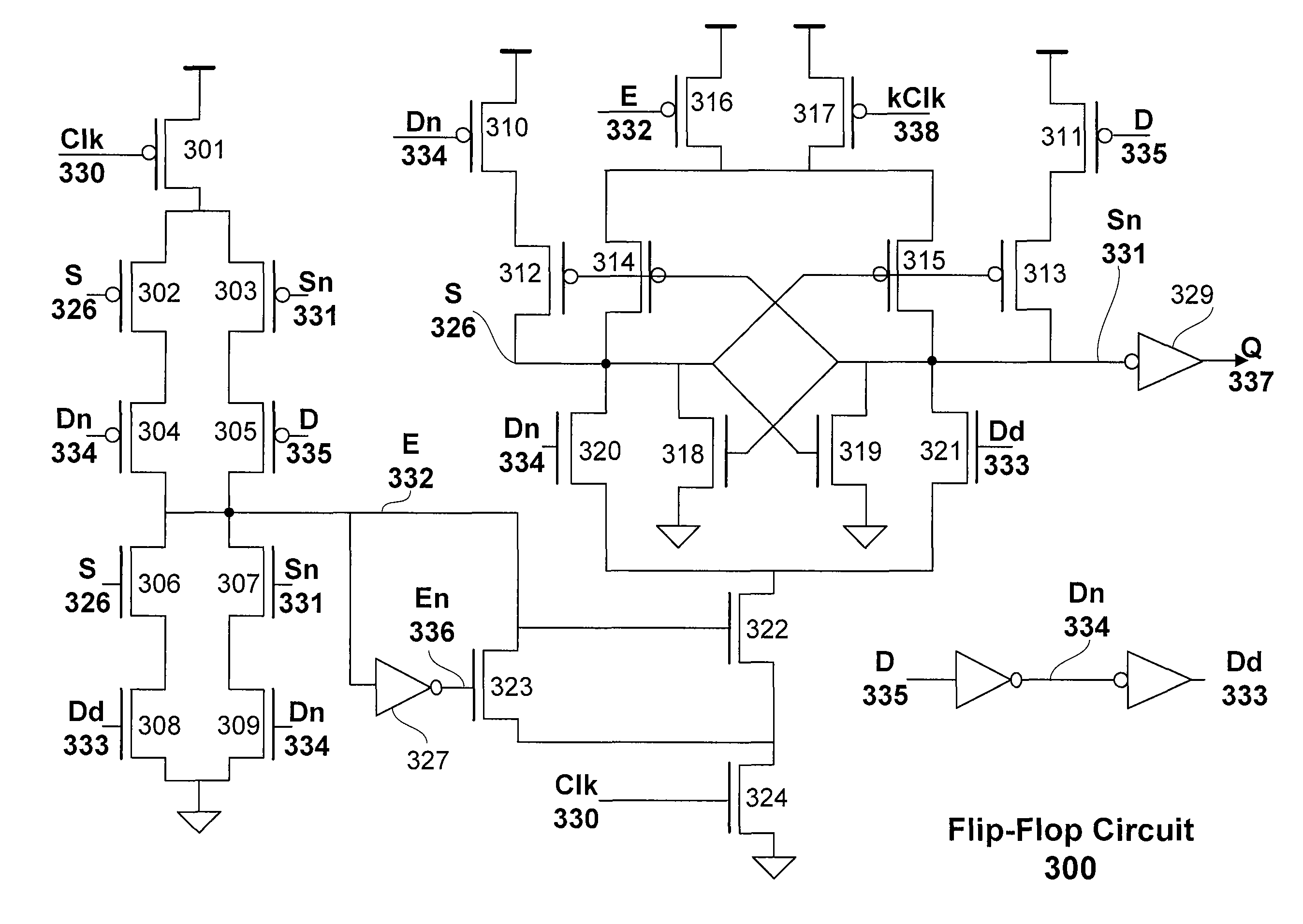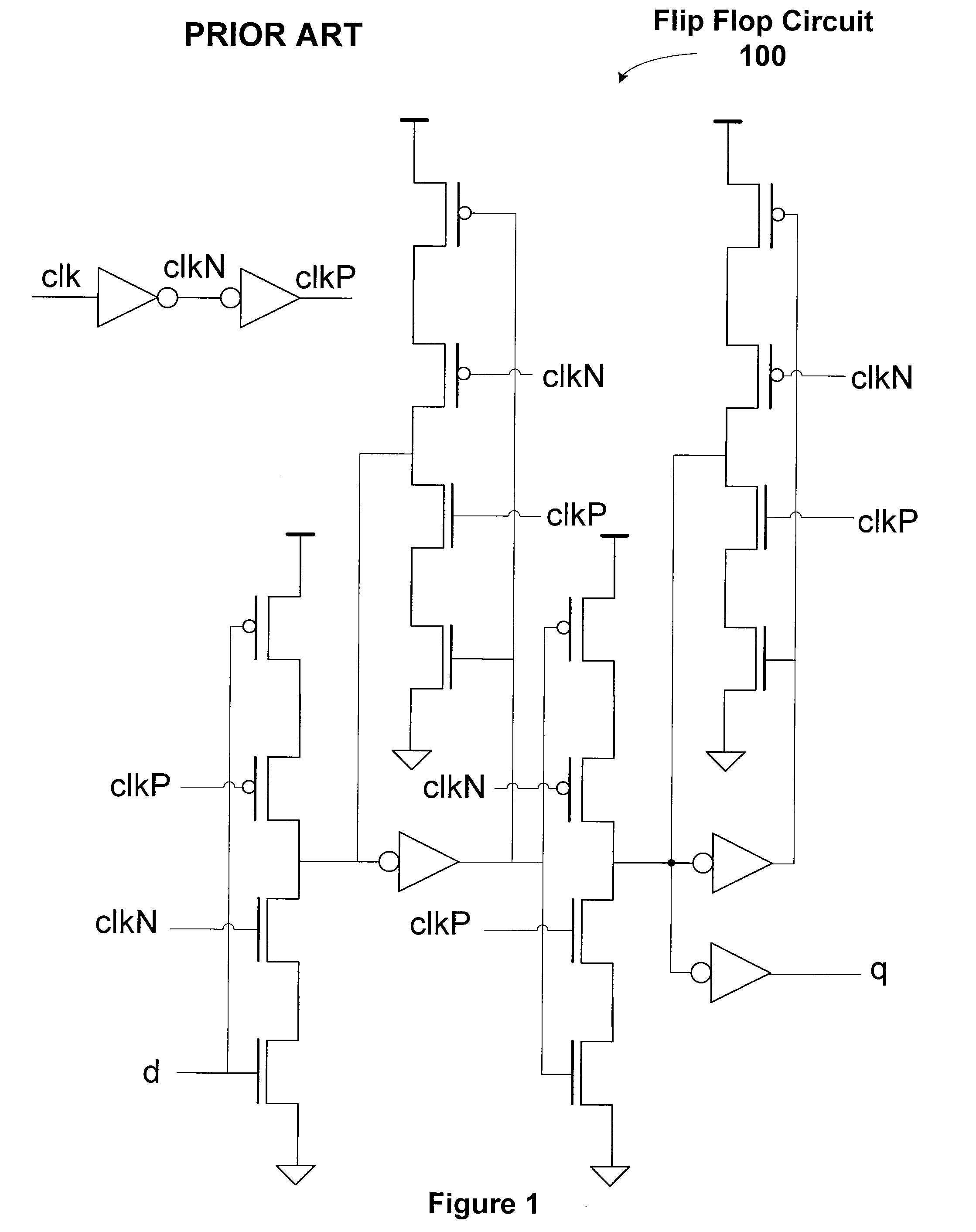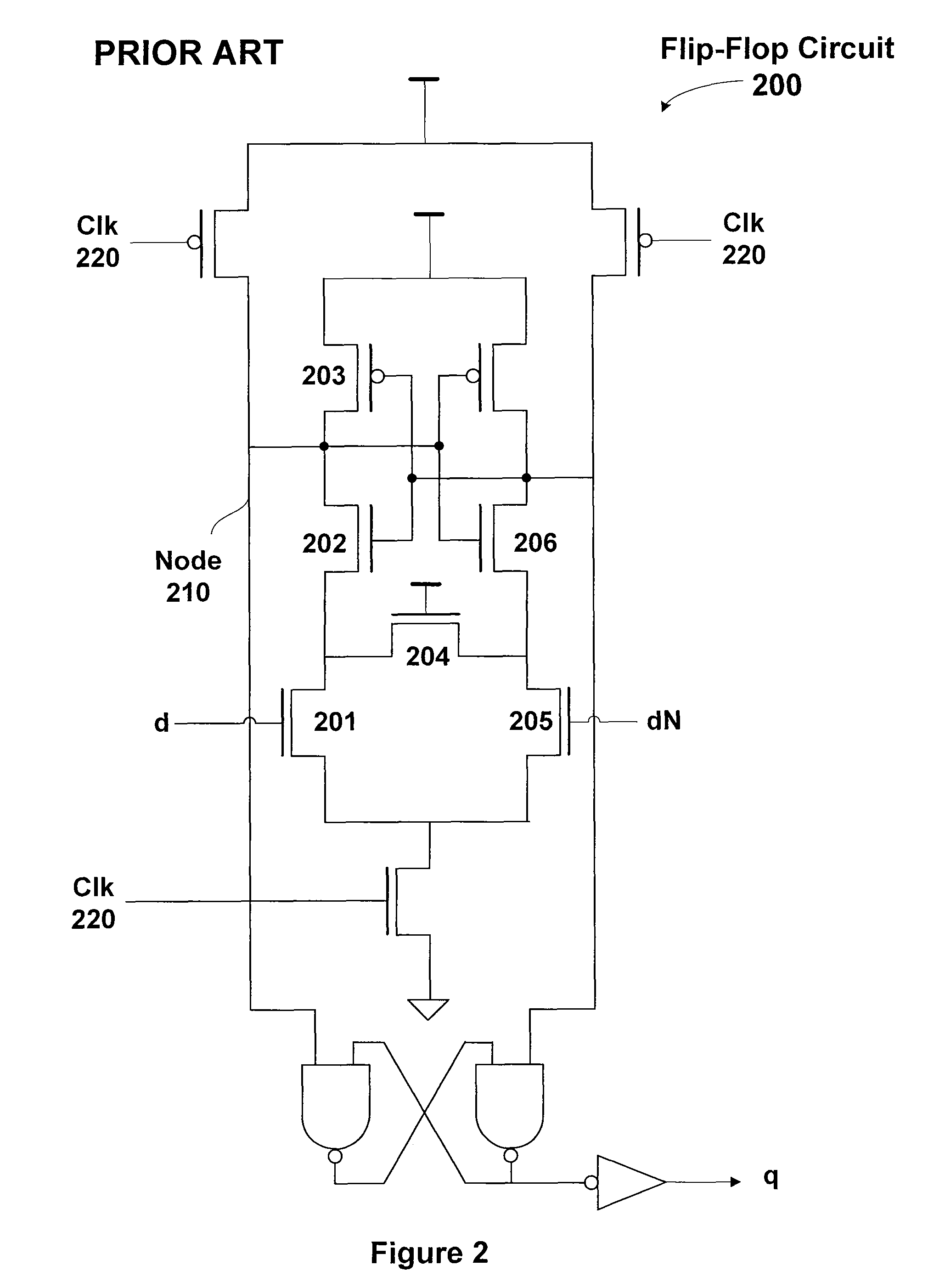Single-trigger low-energy flip-flop circuit
a low-energy flip-flop circuit and single-trigger technology, applied in logic circuits, pulse generators, pulse techniques, etc., can solve the problems of large fraction of power dissipation in conventional digital integrated circuits consumed in the clock network reduce clock signal load, and reduce clock energy
- Summary
- Abstract
- Description
- Claims
- Application Information
AI Technical Summary
Benefits of technology
Problems solved by technology
Method used
Image
Examples
Embodiment Construction
[0018]In the following description, numerous specific details are set forth to provide a more thorough understanding of the present invention. However, it will be apparent to one of skill in the art that the present invention may be practiced without one or more of these specific details. In other instances, well-known features have not been described in order to avoid obscuring the present invention.
[0019]FIG. 3 illustrates a single-trigger low-energy flip-flop circuit 300, according to one embodiment of the invention. The flip-flop circuit 300 is a fully-static, clock-energy efficient flip-flop that presents only three loads to the clock and does not depend on transistor device size relationships. As shown in FIG. 3 transistors 306, 307, 308, 309, 318, 319, 320, 321, 322, 323, and 324 are NMOS devices and transistors 301, 302, 303, 304, 305, 310, 311, 312, 313, 314, 315, 316, and 317 are PMOS devices. The flip-flop circuit 300 includes four main sub-circuits, a single trigger sub-...
PUM
 Login to View More
Login to View More Abstract
Description
Claims
Application Information
 Login to View More
Login to View More - R&D
- Intellectual Property
- Life Sciences
- Materials
- Tech Scout
- Unparalleled Data Quality
- Higher Quality Content
- 60% Fewer Hallucinations
Browse by: Latest US Patents, China's latest patents, Technical Efficacy Thesaurus, Application Domain, Technology Topic, Popular Technical Reports.
© 2025 PatSnap. All rights reserved.Legal|Privacy policy|Modern Slavery Act Transparency Statement|Sitemap|About US| Contact US: help@patsnap.com



